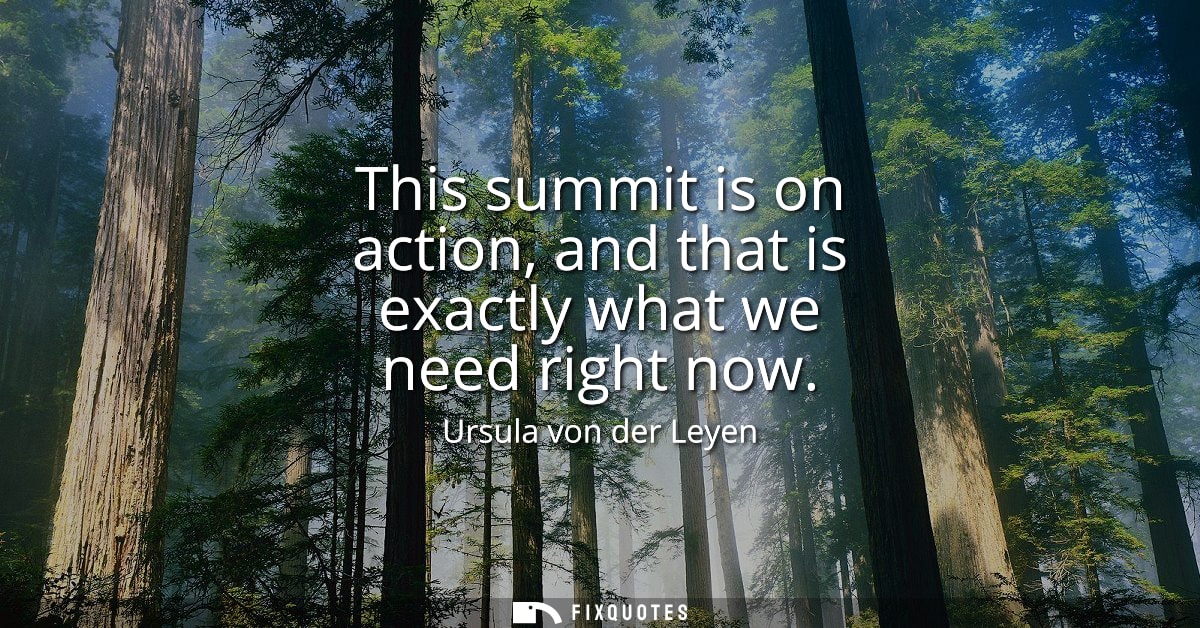"This summit is on action, and that is exactly what we need right now"
About this Quote
A call for action over deliberation signals a deliberate pivot from rhetoric to implementation. It frames the gathering not as another forum for speeches and communiqués, but as a workshop for decisions, deadlines, and deliverables. The language compresses time, “right now”, and speaks to a public weary of plans that fail to leave the page. It establishes a standard by which the event should be judged: not by the elegance of its statements, but by the concrete steps set in motion.
Such framing carries strategic weight in a European context often defined by complex negotiations, layered institutions, and incremental compromise. It encourages participants to arrive with proposals that are costed, scheduled, and measurable, and it invites scrutiny afterward through milestones, dashboards, and transparent reporting. Action here means budgets authorized, rules implemented, projects launched, and barriers, permitting delays, regulatory bottlenecks, fragmented markets, systematically removed.
There is an implicit recognition of overlapping crises that punish hesitation: climate impacts accelerating faster than policy cycles, security shocks reshaping energy and supply chains, technological shifts outpacing regulation, and social cohesion strained by inequality and inflation. By elevating action, the statement aims to convert consensus into capability, turning political alignment into institutional muscle, procurement that scales, investment that crowds in private capital, skills programs that reach workers, and innovation that navigates from lab to market.
Yet urgency must coexist with rigor. Action for its own sake risks misallocation and backlash. The call therefore implies evidence-based choices, clear accountability, and feedback loops that adapt policies when data contradicts plans. It also implies collective agency: leaders, businesses, cities, and citizens aligned around a shared timetable.
Ultimately, the emphasis is performative and programmatic at once. It sets expectations, reduces the tolerance for delay, and reframes success as the visible transformation of systems, energy, industry, digital, and social, within the narrow window that history is allowing.
More details
About the Author

